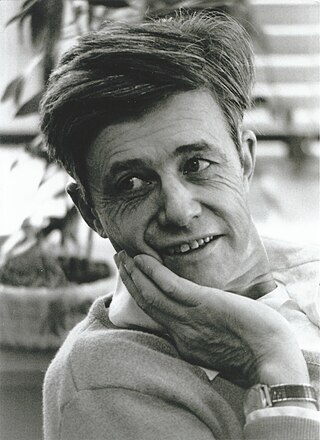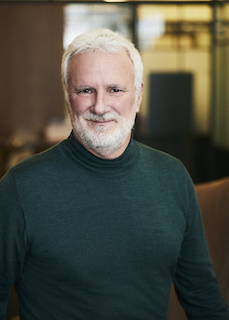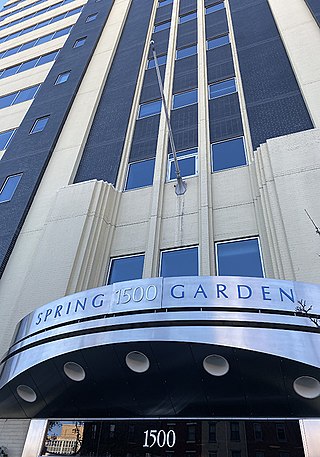Related Research Articles

APL is a programming language developed in the 1960s by Kenneth E. Iverson. Its central datatype is the multidimensional array. It uses a large range of special graphic symbols to represent most functions and operators, leading to very concise code. It has been an important influence on the development of concept modeling, spreadsheets, functional programming, and computer math packages. It has also inspired several other programming languages.
The J programming language, developed in the early 1990s by Kenneth E. Iverson and Roger Hui, is an array programming language based primarily on APL.

Kenneth Eugene Iverson was a Canadian computer scientist noted for the development of the programming language APL. He was honored with the Turing Award in 1979 "for his pioneering effort in programming languages and mathematical notation resulting in what the computing field now knows as APL; for his contributions to the implementation of interactive systems, to educational uses of APL, and to programming language theory and practice".

Roger D. Moore was the 1973 recipient of the Grace Murray Hopper Award from the Association for Computing Machinery (ACM). It was given "for their work in the design and implementation of APL\360, setting new standards in simplicity, efficiency, reliability and response time for interactive systems."
In computer science, array programming refers to solutions that allow the application of operations to an entire set of values at once. Such solutions are commonly used in scientific and engineering settings.
K is a proprietary array processing programming language developed by Arthur Whitney and commercialized by Kx Systems. The language serves as the foundation for kdb+, an in-memory, column-based database, and other related financial products. The language, originally developed in 1993, is a variant of APL and contains elements of Scheme. Advocates of the language emphasize its speed, facility in handling arrays, and expressive syntax.

Roger Kwok Wah Hui was a computer scientist who worked on array programming languages. He codeveloped the programming language J.
The Iverson Award, more formally the Kenneth E. Iverson Award for Outstanding Contribution to APL, is presented by the Special Interest Group on APL (SIGAPL) of the Association for Computing Machinery (ACM). It is presented to a person who has made significant contributions to the APL programming language or to the APL community. These contributions may be Technical or Service. The award consists of a plaque and a certificate, and is accompanied by a cash prize and a lifetime membership in SIGAPL.

Arthur Whitney is a Canadian computer scientist most notable for developing three programming languages inspired by APL: A+, k, and q, and for co-founding the U.S. companies Kx Systems and Shakti Software.
I. P. Sharp Associates (IPSA) was a major Canadian computer time-sharing, consulting and services firm of the 1970s and 1980s. IPSA is well known for its work on the programming language APL, an early packet switching computer network named IPSANET, and a powerful mainframe computer-based email system named 666 Box, stylized as 666 BOX. It was purchased in 1987 by Reuters Group, which used them until 2005 as a data warehousing center for business data.
Rank is a generalization of looping as used in scalar (non-array-oriented) programming languages. It is also a generalization of mapcar in the language Lisp and map in modern functional programming languages, and a generalization of scalar extension, inner (matrix) product, and outer product in APL\360. The canonical implementation of rank may be the language J, but it is also available in Dyalog APL, the International Organization for Standardization (ISO) technical standard on Extended APL, and NARS2000.
Lawrence Moser "Larry" Breed was a computer scientist, artist and inventor, best known for his involvement in the programming language APL.
The programming language APL is distinctive in being symbolic rather than lexical: its primitives are denoted by symbols, not words. These symbols were originally devised as a mathematical notation to describe algorithms. APL programmers often assign informal names when discussing functions and operators but the core functions and operators provided by the language are denoted by non-textual symbols.

Eugene Edward McDonnell was a computer science pioneer and long-time contributor to the programming language siblings APL and J.
Scientific Time Sharing Corporation (STSC) was a pioneering timesharing and consulting service company which offered APL from its datacenter in Bethesda, MD to users in the United States and Europe.
Soliton Incorporated is a Canadian company formed in 1993 to continue supporting and developing the programming language Sharp APL, and related products and services, originally developed by Canadian company I. P. Sharp Associates.
The programming language APL uses a number of symbols, rather than words from natural language, to identify operations, similarly to mathematical symbols. Prior to the wide adoption of Unicode, a number of special-purpose EBCDIC and non-EBCDIC code pages were used to represent the symbols required for writing APL.

John Morley Scholes (1948–2019) was a British computer scientist. In his professional career he was devoted to the development of the programming language APL. He was the designer and implementer of direct functions.
A direct function is an alternative way to define a function and operator in the programming language APL. A direct operator can also be called a dop. They were invented by John Scholes in 1996. They are a unique combination of array programming, higher-order function, and functional programming, and are a major distinguishing advance of early 21st century APL over prior versions.

Clarivate Plc is a British-American publicly traded analytics company that operates a collection of subscription-based services, in the areas of bibliometrics and scientometrics; business / market intelligence, and competitive profiling for pharmacy and biotech, patents, and regulatory compliance; trademark protection, and domain and brand protection. In the academy and the scientific community, Clarivate is known for being the company which calculates the impact factor, using data from its Web of Science product family, that also includes services/applications such as Publons, EndNote, EndNote Click, and ScholarOne. Its other product families are Cortellis, DRG, CPA Global, Derwent, MarkMonitor, CompuMark, and Darts-ip, and also the various ProQuest products and services.
References
- ↑ Robert Bernecky (2016-10-12). "Zoo Story: How the I.P. Sharp APL Development Group Got its Name". Dyalog '16 User Meeting. Retrieved 2018-03-08.
- ↑ Bob Bernecky (1973-08-22). "Speeding up Dyadic Iota and Dyadic Epsilon". Proceedings of the APL Congress 73.
- ↑ Bob Bernecky and Roger Hui (1991-08-04). "Gerunds and Representations". APL91 Conference Proceedings.
- ↑ Bob Bernecky (1977-06-10). "Comparison Tolerance". SATN 23, I. P. Sharp Associates. Retrieved 2018-03-06.
- 1 2 Bob Bernecky, Kenneth E. Iverson, Eugene McDonnell, Robert Metzger, and J. Henri Schueler (1983-05-02). "Language Extensions of May 1983". SATN 45, I. P. Sharp Associates. Retrieved 2018-03-06.
{{cite journal}}: CS1 maint: multiple names: authors list (link) - ↑ Bob Bernecky and Kenneth E. Iverson (1980-10-06), "Operators and Enclosed Arrays", 1980 APL Users Meeting Proceedings, retrieved 2018-03-06
- ↑ Robert Bernecky and Charles Brenner and Stephen B. Jaffe and George P. Moeckel (1990). "ACORN: APL to C on Real Numbers". APL90 Conference Proceedings.
- ↑ Robert Bernecky (1997). APEX: The APL Parallel Executor (M.Sc. thesis). University of Toronto.
